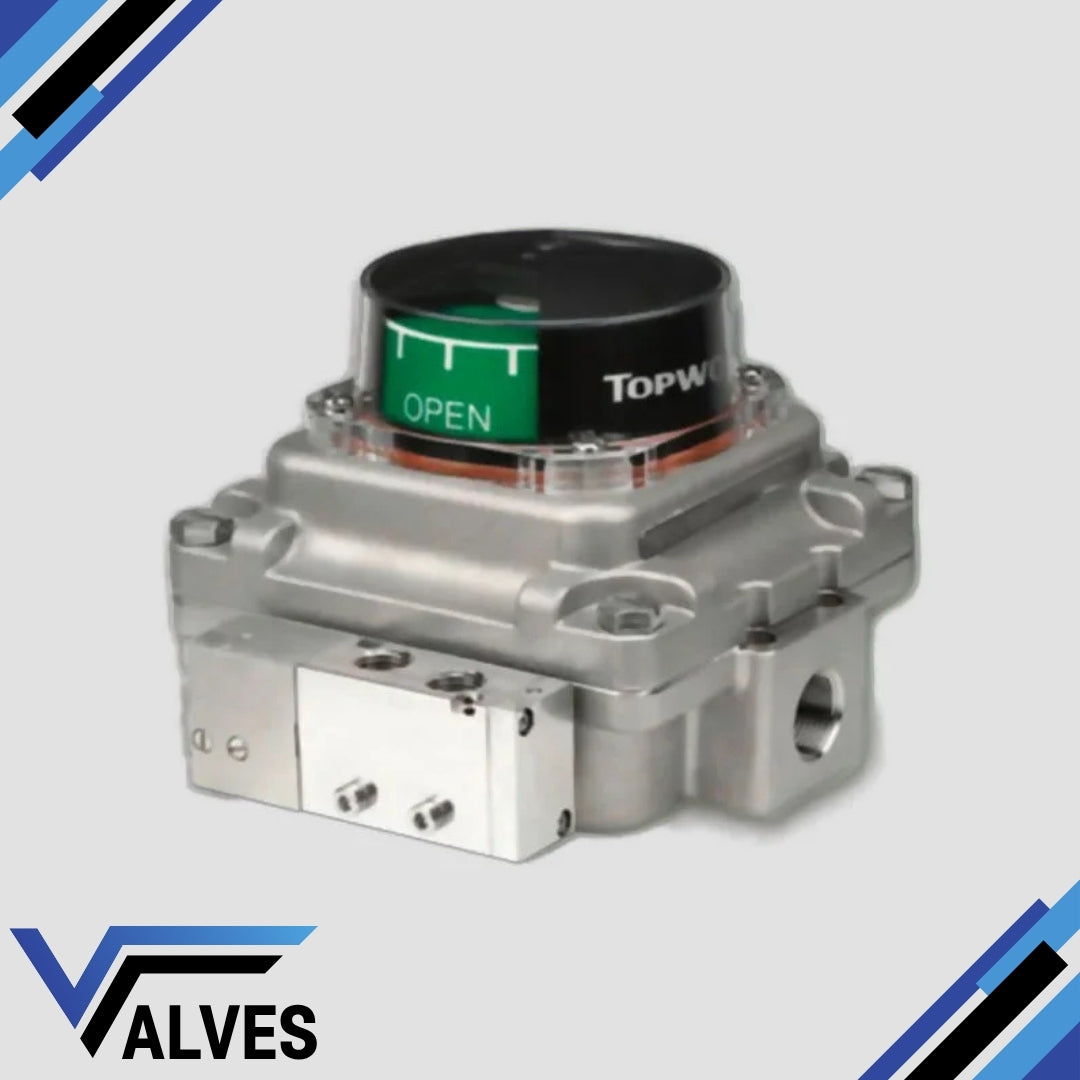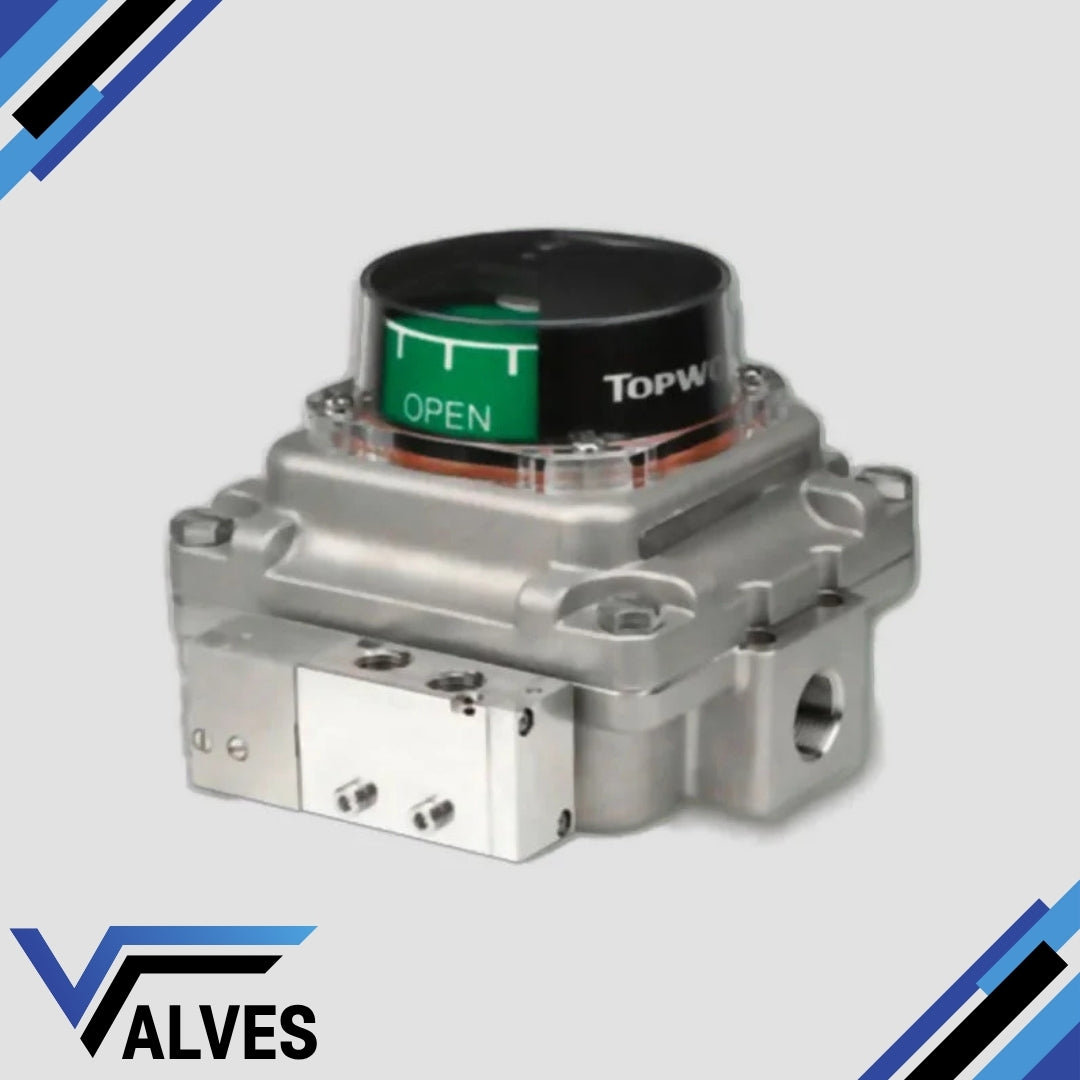Topworx Switchboxes
TopWorx Limit Switch Box TXS-0X0GNMM Valve Monitor
TopWorx Limit Switch Box TXS-0X0GNMM Valve Monitor
Couldn't load pickup availability
The TXS-0X0GNMM features a compact, direct-mount enclosure designed for hazardous locations. It provides both visual and remote position indication, ensuring operators can easily monitor valve positions. The unit is compatible with a wide range of actuators and valves, making it highly versatile. Additionally, it offers several switch types, including GO™ Switch options for high-reliability, non-contact switching.
Key Features:
- Durable Construction: Designed for harsh environments, the enclosure offers protection from dust, water, and other contaminants (IP66/67 rated).
- Visual Display: Standard 90° indication with a green-open/red-closed display makes it easy to confirm valve positions.
- Wide Temperature Range: Operates in extreme conditions, from -40°C to 85°C, ensuring reliable performance.
- Multiple Certifications: Intrinsically safe and non-incendive options available, with global certifications (ATEX, IECEx, and more).
- Switch Options: Available with mechanical, inductive, and GO™ Switch options for tailored performance.
- Integration Flexibility: Supports integration with various bus networks, including Profibus and AS-Interface.
Additional Information:
The TXS model can be customised for different operational needs, whether for general-purpose use or hazardous areas. Its solid-state electronics ensure long-term reliability with minimal maintenance. The device is also available with integrated pilot valves for controlling pneumatic actuators, streamlining the valve control process.
Share

FAQ's
What is the difference between a valve and an actuator?
What types of actuators are available?
The main types of actuators are:
Pneumatic actuators – use compressed air for fast, reliable operation.
Electric actuators – use electrical power for precise control.
Hydraulic actuators – use fluid pressure for high-torque applications.
Each type offers unique advantages depending on the environment, media, and system control needs.
How do I choose the right actuator for my valve?
To select the correct actuator, consider:
Valve type and torque requirement
Power source available (air, electric, or hydraulic)
Operating environment (temperature, humidity, hazardous area)
Control signal type (on/off or modulating)
Matching actuator torque and compatibility with the valve’s ISO mounting ensures reliable performance.
What are the main types of valves used in automation?
The most common valves in automated systems include:
Ball valves – for tight shutoff and quick operation.
Butterfly valves – for larger flow control with compact design.
Globe valves – for precise throttling and flow regulation.
Check valves – to prevent backflow.
Gate valves – for full bore flow isolation.
What’s the difference between a double-acting and spring-return actuator?
Double-acting actuators use air (or power) to both open and close the valve.
Spring-return actuators use air to open (or close) the valve, and a built-in spring to automatically return it to a safe position when power or air is lost — ideal for fail-safe operation.
How often should valves and actuators be serviced?
Regular maintenance intervals depend on operating conditions, but a good rule of thumb is to inspect every 6–12 months.
This includes checking for leaks, lubrication, seal wear, and actuator responsiveness to prevent unexpected downtime.

